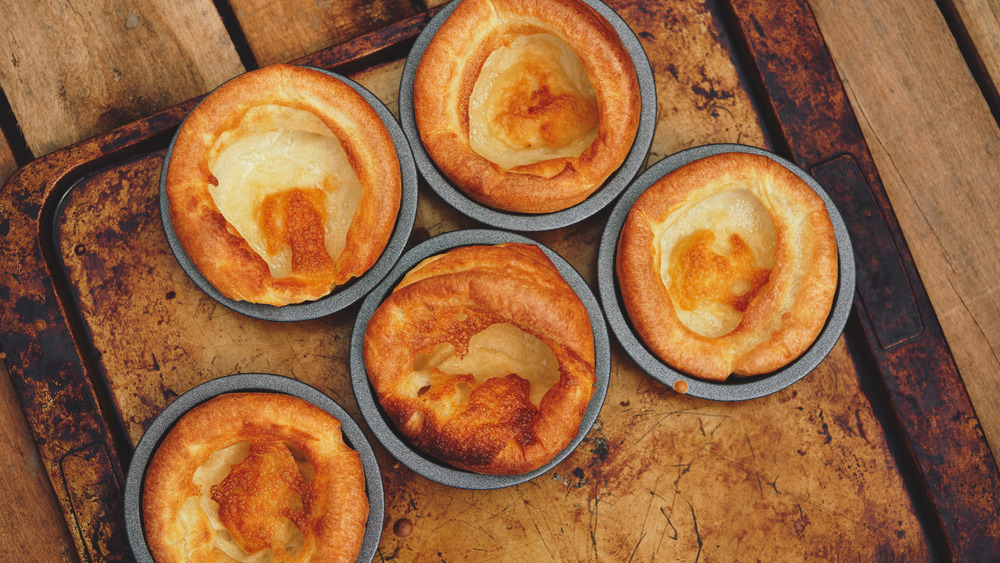The Real Difference Between Popovers And Yorkshire Pudding
In the United States, you have popovers. In the United Kingdom, you have Yorkshire puddings. Both are dishes made from an egg batter and each generally resembles the other. So, do they differ in any meaningful way?
The answer is yes, and no. in a piece about popovers on its website, King Arthur Baking brushes over the difference: "Same batter; different baking method." One makes a Yorkshire pudding by pouring the batter into meat drippings or fat. The Yorkshire pudding is then made either as a series of individual puddings or one big roast.
Is This That Food, however, addresses an important distinction in how each dish is used. Namely, popovers serve as a pastry that can be consumed throughout the day with different kinds of pairings. They are their own event. The Yorkshire pudding, though, was invented as a means to use the drippings of a meat dish as it cooked. It tends to be a side dish that pairs well with almost any kind of supper.
Still, their essential similarity cannot be denied.
Do popovers and Yorkshire puddings have a shared history?
Considering the similarities between popovers and Yorkshire pudding, it only seems natural to suppose that there must be a shared history between the two. However, the actual histories behind the creation of each remain murky.
The Spruce Eats managed to trace the earlier Yorkshire pudding recipe to a 1737 book titled The Whole Duty of a Woman, in which the basic recipe is written down as a dripping pudding. A second recipe appeared in The Art of Cookery, Made Plain and Easy, published in 1747.
Popovers first appeared in a 1876 cookbook called Practical Cooking by M. N. Henderson, according to an inquiry into the origins of popovers by Lynn Bonnett's website The Perfect Popover. A simple assumption, then, would be that popovers evolved from colonial cooking and was simply considered unworthy of attention until the late date. James Bear, however, as Bonnett notes, states that the similarities are coincidental as both dishes were created in their own contexts.
Whatever connection between the two, if any, has been lost, probably forever.

